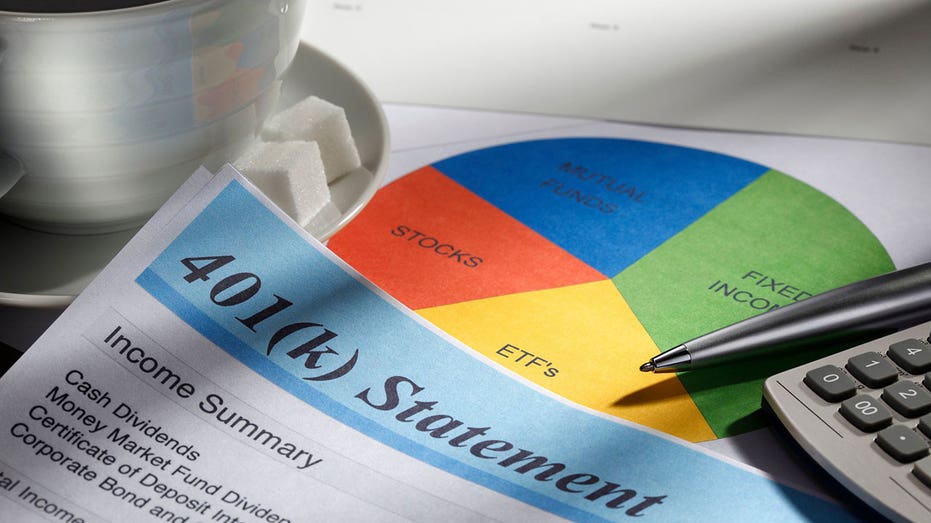[ad_1]
Zach Hill, Head of Portfolio Management at Horizon Investments, discusses the risks surrounding markets and the economy in 2023.
With the end of the year fast approaching, many employees expect to receive bonuses from their employers.
According to a survey conducted by Robert Half in early November, more than half of US companies, 57%, plan to give employees a year-end bonus this year. That’s down from 2021, when 77% indicated they plan to do so, according to the business advisory firm.
While there are many ways a person can use their year-end bonus, some of the best things they can do include paying off debt, saving, investing and building an emergency fund, experts say.

A man holds a jar full of savings. (iStock/iStock)
At Morgan Stanley’s Summit Wealth Management Group, year-end bonuses could serve as a “great way” to deal with “stressful” debt.
Bonus season for personal equity that doesn’t want bright, wall way: report
In mid-November, the Federal Reserve Bank of New York reported that at the end of the third quarter, total household debt reached $16.51 trillion, an increase of $351 billion from the previous quarter.
“Determining how and when to pay off debt depends on your income or overall cash flow, your risk tolerance, your goals and your investment horizon,” Emily Irwin, senior director of advisory and planning at Wells Fargo Wealth and Investment Management, told FOX Business.
According to Irwin, when trying to figure out how to spend their bonuses, people looking to determine their risk tolerance should ask themselves how they feel about their debt, their emergency fund situation and how much they can set aside to invest or pay down debt. Also, one should “consider your intentions,” she said.
“You don’t have to choose between using your bonus to invest or pay off debt — you can do both,” Irwin said.
Saving some or all of your year-end bonus can help meet annual savings goals. It can help people get closer to their long-term plans, according to Morgan Stanley’s Summit Wealth Management Group.
If possible, Irwin suggests as a starting point to create annual savings goals and set aside 10% of your paycheck for retirement and investments until you reach an “ideal” 20%.
Big inflation for retirement savings
“If you are an employee participating in a 401(K) plan, a portion of your bonus may be allocated to your retirement account (unless you make a timely change in your election),” Irwin said in a statement. . “This can be a great strategy because it’s setting up bonus dollars for your retirement years.”

401(k) plans ensure that Americans have enough money to live on after retirement and not receive an annual salary. (Getty/Getty Images)
The Internal Revenue Service (IRS) says that by 2022, individuals under the age of 50 can contribute up to $20,500 per year to their 401(k). In 2023, this limit will increase by $1,000 to $22,500. People age 50 and older can contribute a maximum of $27,000 in 2022 and $30,000 the following year, according to the IRS.
For 2022, the contribution limit for IRAs is $6,000 for those under 50 and $7,000 for those over 50. The 2023 limit is slightly higher, with those under 50 allowed to contribute $6,500 to IRAs and those 50 and older allowed $7,500.
New investors can choose index funds to invest their year-end bonuses, Elana Dure of JPMorgan Wealth Management wrote in an article. In addition to index funds, some other options for investors may include individual stocks, exchange-traded funds or mutual funds, according to the article.
Is Santa’s parade coming to Wall Street this year?
“The idea is to get into the mindset of saving and investing, encouraging initiative and as a reward,” Irwin told FOX Business.

A coin is dropped into a piggy bank in this photo taken to illustrate the theme of disaster on June 18, 2015 in Oradell, New Jersey (Photo: Ron Antonelli/Bloomberg via Getty Images) (Photographer: Ron Antonelli/Bloomberg via Getty Images/Getty Images)
Another option, according to JP Morgan Wealth Management Article and Irwin, is to stash bonus money in your emergency fund. Irwin says it’s a “fun and stressful, easy way to position yourself for unexpected events,” whether it’s an unwanted trip or your car needs repairs.
“I suggest people pull enough into the emergency fund to get to the point where they have $1,000-$5,000 saved — you may be able to fund all or most of your emergency fund with your bonus,” she says.
Other steps people can take to meet their emergency savings goals, Irwin told FOX Business, include eliminating or reducing certain expenses.
[ad_2]
Source link

